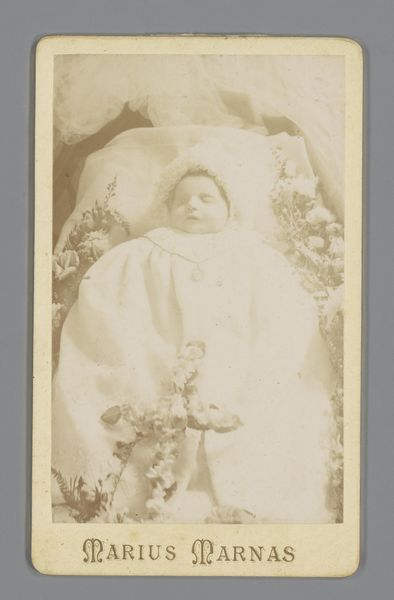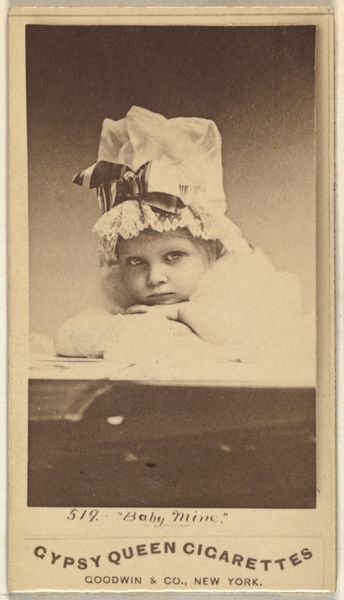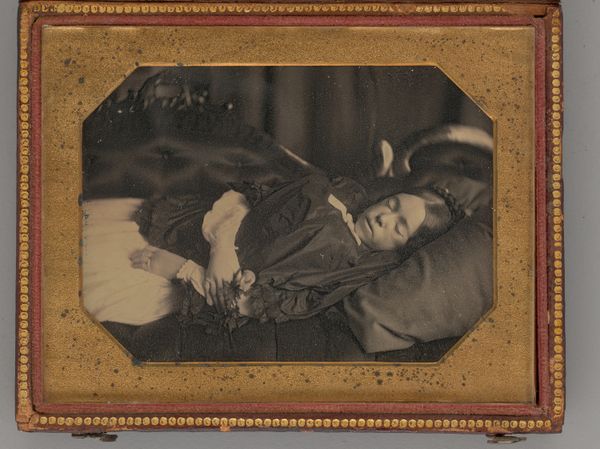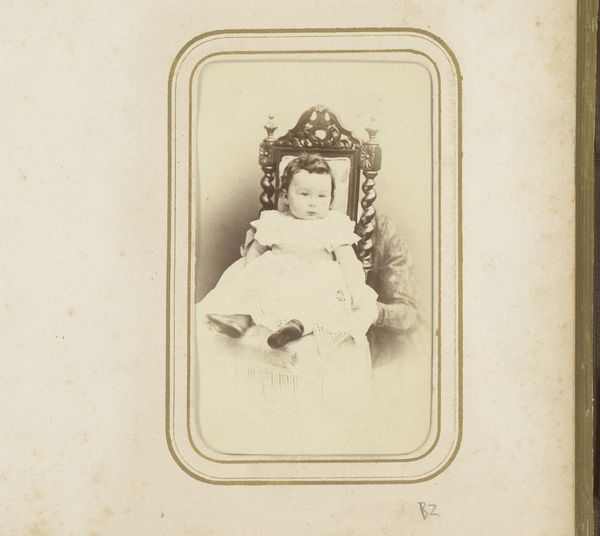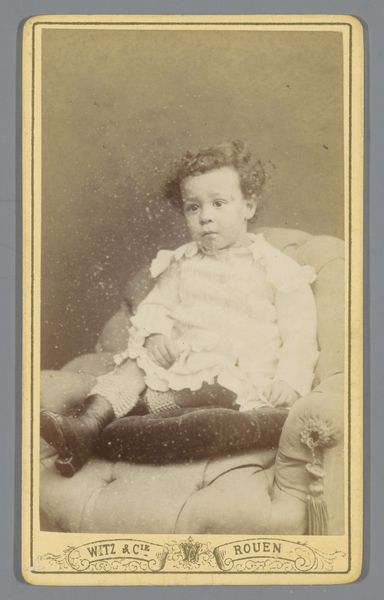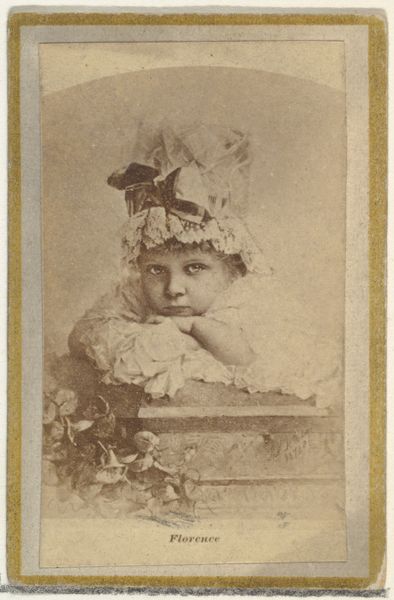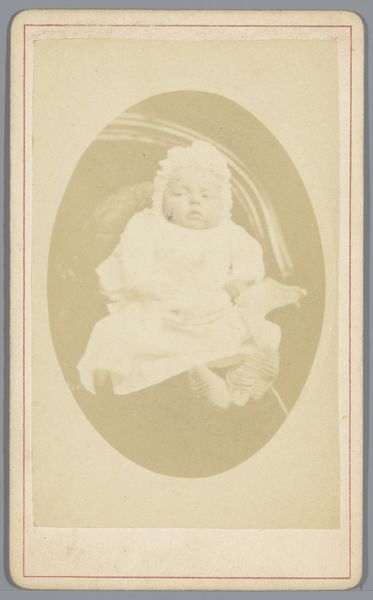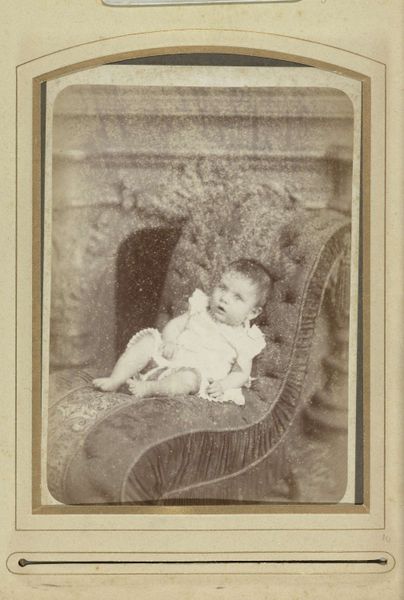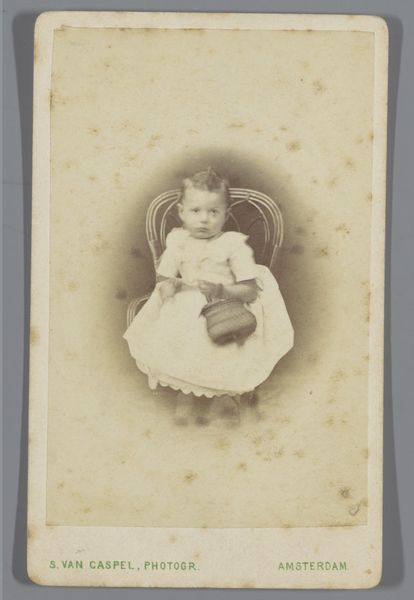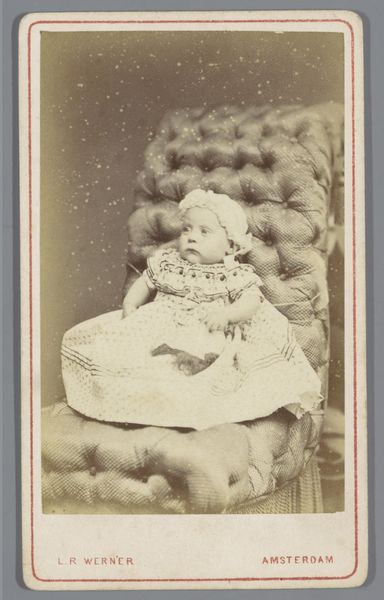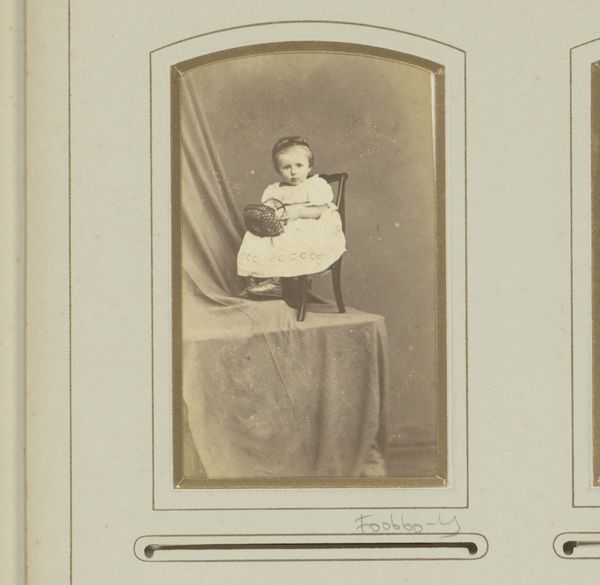
photography, gelatin-silver-print
#
portrait
#
still-life-photography
#
photography
#
child
#
gelatin-silver-print
#
realism
Dimensions: height 63 mm, width 105 mm
Copyright: Rijks Museum: Open Domain
Editor: So, this gelatin silver print from between 1865 and 1897, "Post-mortem portrait of an unknown child" by Verryck-Hylaerts, is incredibly delicate. The child looks like they’re sleeping. What do you make of the way they memorialized children back then? Curator: The image carries echoes of a time when death, especially infant mortality, was much more present in daily life. Post-mortem photography served, in part, to defy death's erasure, providing a tangible memory for grieving families. Do you see how the child is presented almost serenely, as if sleeping? Editor: Yes, it’s staged in a way that almost denies the reality of the situation. It is disturbing because it almost feels too staged. Curator: The visual language certainly carries heavy symbolic weight. Notice the elaborate clothing, the careful positioning – all intended to convey innocence, peace, and perhaps even a sense of ascension. It touches on fundamental anxieties around loss, but also the cultural rituals created to mitigate that pain. Are there specific details that stand out to you? Editor: The details in the lace are astonishing. So, it was partly a means to accept or soften the blow of this harsh reality? Curator: Precisely. The lace, the soft fabrics, and the very act of creating this image speak to the intense need to preserve the memory, crafting an idealized, almost ethereal vision to counter the harshness of death. The image is fraught with encoded messages of grief and remembrance, isn't it? Editor: Absolutely. Seeing it framed like this gives it another dimension, knowing why the photograph was taken is heartbreaking, but allows the viewer to empathize with their family, even after over a century. Curator: Exactly, these images connect us with shared emotions across centuries and very different cultural landscapes, that remind us of universal experience.
Comments
No comments
Be the first to comment and join the conversation on the ultimate creative platform.
